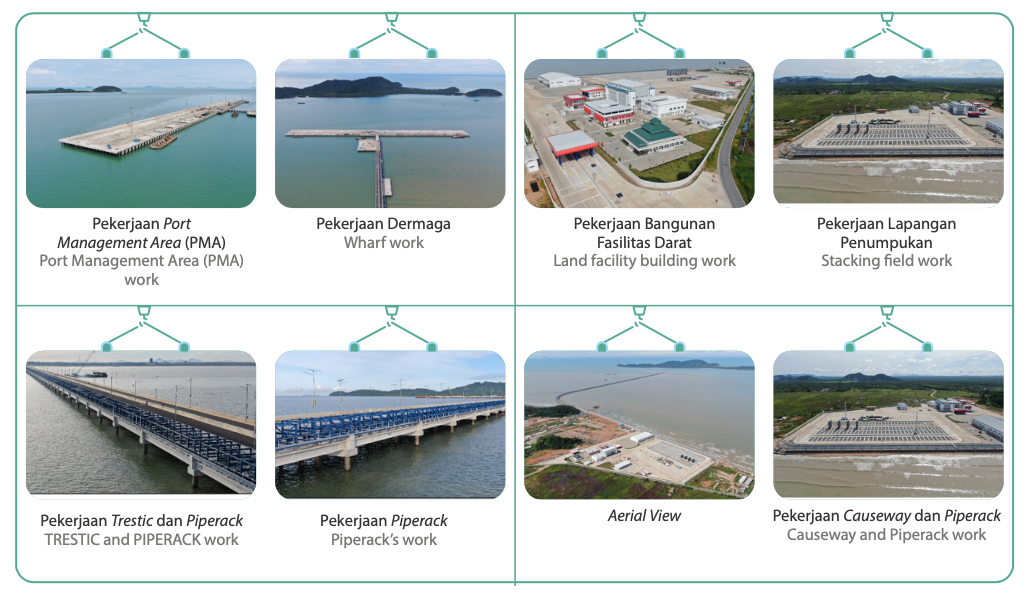OPERATIONAL REVIEW
KIJING TERMINAL DEVELOPMENT
The Kijing Terminal construction and development is a National Strategic Project (PSN) to support the sea highway program launched by the Government to improve marine connectivity and increase the competitiveness of natural resource products from Kalimantan. Kijing Terminal is projected to become a hub port in the regional area, and has been designed to international standards for containers, liquid bulk, dry bulk and multipurpose terminal facilities and has an ultimate capacity of up to 2 million TEUs/year (containers), 12 million tons/year (liquid bulk), 15 million tons/year (dry bulk), and 1 million tons/ year (multipurpose).
The Kijing Phase 1 Terminal construction costs in 2021 were Rp411.23 billion or 95.54% of the 2021 RKAP target of Rp430.44 billion. These costs include the physical construction of the terminal where until the end of 2021 the progress has reached 91.01%. Currently, finishing work being carried out on the wharf area, with reconstruction in the trestle area, Port Management Area (PMA) and Piperack. The land area work includes land facility building work (Office Buildings, Container Freight Stations (CFS), Workshops and others), mechanical electrical work, IT facility installation work and plumbing, asset relocation work, as well as construction of a perimeter safety fence on 200 Ha of land.

KALIBARU TERMINAL CONSTRUCTION
The Kalibaru Terminal construction involves increasing the Tanjung Priok Port capacity to support the distribution of national logistics. The Kalibaru Terminal Phase 1A (CT1 construction, and Channel and Pond Dredging Work) has been completed and has been operating since September 2016. Meanwhile, the work
